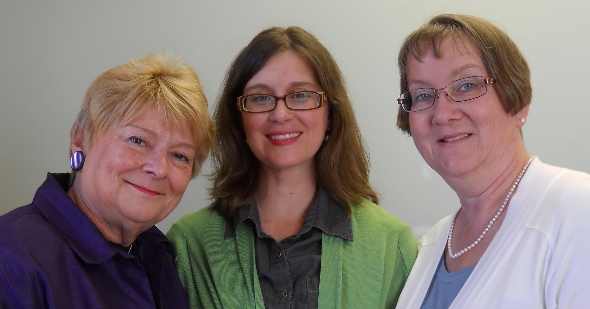Top Tips on Love and Relationships from Susan Moreno, Kealah Parkinson
and Marci Wheeler
Susan Moreno is the founder and president of MAAP Services, Inc. and is internationally known as a lecturer and motivational speaker. Marci Wheeler is a Social Work Specialist working at the Indiana Resource Center for Autism and writes and consults on topics relating to autism spectrum disorders. Kealah Parkinson is a professional communications coach and public speaker who specializes in fostering communication skills in clients with developmental disorders.
They are the authors of The Partner’s Guide to Asperger Syndrome.

Top Tips for non-spectrum (NS)/AS Relationships
In our book, we interviewed over 100 women who were in relationships with men on the spectrum. Here are some of the best tips we learned from all the partners in these extraordinary relationships:
1. Learn about autism spectrum disorders and how they affect the ASD partner; and in turn the ASD partner must learn about the NS behavior of their partner.
This will help partners understand and respect each other better and help resolve the issues partners face. NS partners can learn from each other as well as from adults on the autism spectrum, but remember that not everything you hear and read will apply to your ASD partner. The same is true for ASD partners learning about NS behavior. Use the knowledge you gain to ask and probe specific situations with your partner. Partners seeking to understand each other can help ensure that expectations of and support for each other can be realistic and appropriate.
2. Do not assume you know the intentions of your partner’s behavior.
Always seek to clarify. NS partners cannot interpret ASD behavior through their non-spectrum filter, and assume that they understand the meaning of a particular behavior of their ASD partner. It’s important to note that this can be especially challenging at the beginning of a diagnosis. The NS partner may feel it’s unfair that the ASD partner cannot often return the empathy, for example. However, once the NS partner begins to show compassion, it may be awesome how much the ASD partner returns this empathy and understanding.
3. Find outlets to alleviate stress – and use them!
Both partners likely have different ways of alleviating stress and both partners must learn these and express these needs to their partner. Encourage humor in your life together. This will help enhance the marital relationship. At times (maybe every day) this will mean separate activities. The ASD partner may need a lot of time to themselves and/or “extra” time to pursue their special interests. The NS partner may need time to “talk” and be emotional with others if the ASD partner cannot be there to “listen”.
4. Communicate with visuals and state exactly what you need (even if it seems obvious).
Use visual information (notes, email, even examples from books or other visual media) to convey or supplement verbal messages. Be creative. Visual information is much easier for most individuals on the autism spectrum to process, and it can be used as a permanent resource when anxiety, sensory overload or executive functioning skills are causing challenges for the partners. Communication should be as clear, calm and predictable. Partners should discuss clear and ongoing information about behavioral expectations. Think in terms of explanation instead of correction.
5. Acknowledge and address sensory needs and issues with your partner.
Sensory needs/issues can change over time and even vary from day to day. Make sure partners are heard when asking for a specific accommodation. In situations where the person on the autism spectrum is not in control, they can get overloaded and shut down or possibly experience a “meltdown”. Both partners need to be aware of this and work together, as much as possible, so both are accommodated. Sensory issues can include just about all aspects of life, from what clothes, foods, bedding and furnishings are comfortable for both partners, to what environments and activities may be enjoyable for both partners. Sensory issues can also affect intimacy. By following the tips above, however, even sensory issues in the bedroom can be lessened or resolved.
More Top Tips on Love and Relationships from JKP authors »
Copyright © Jessica Kingsley Publishers 2012.